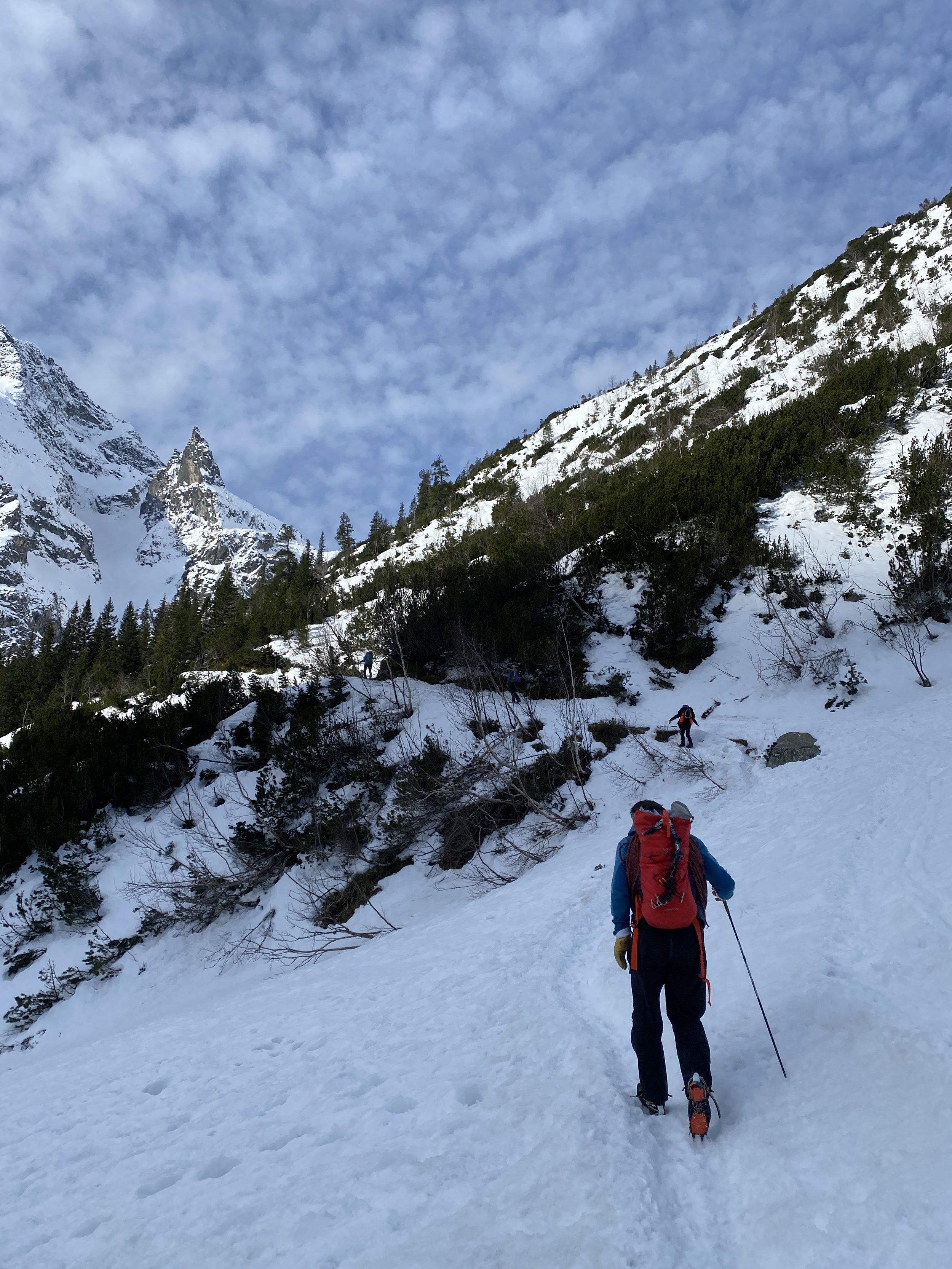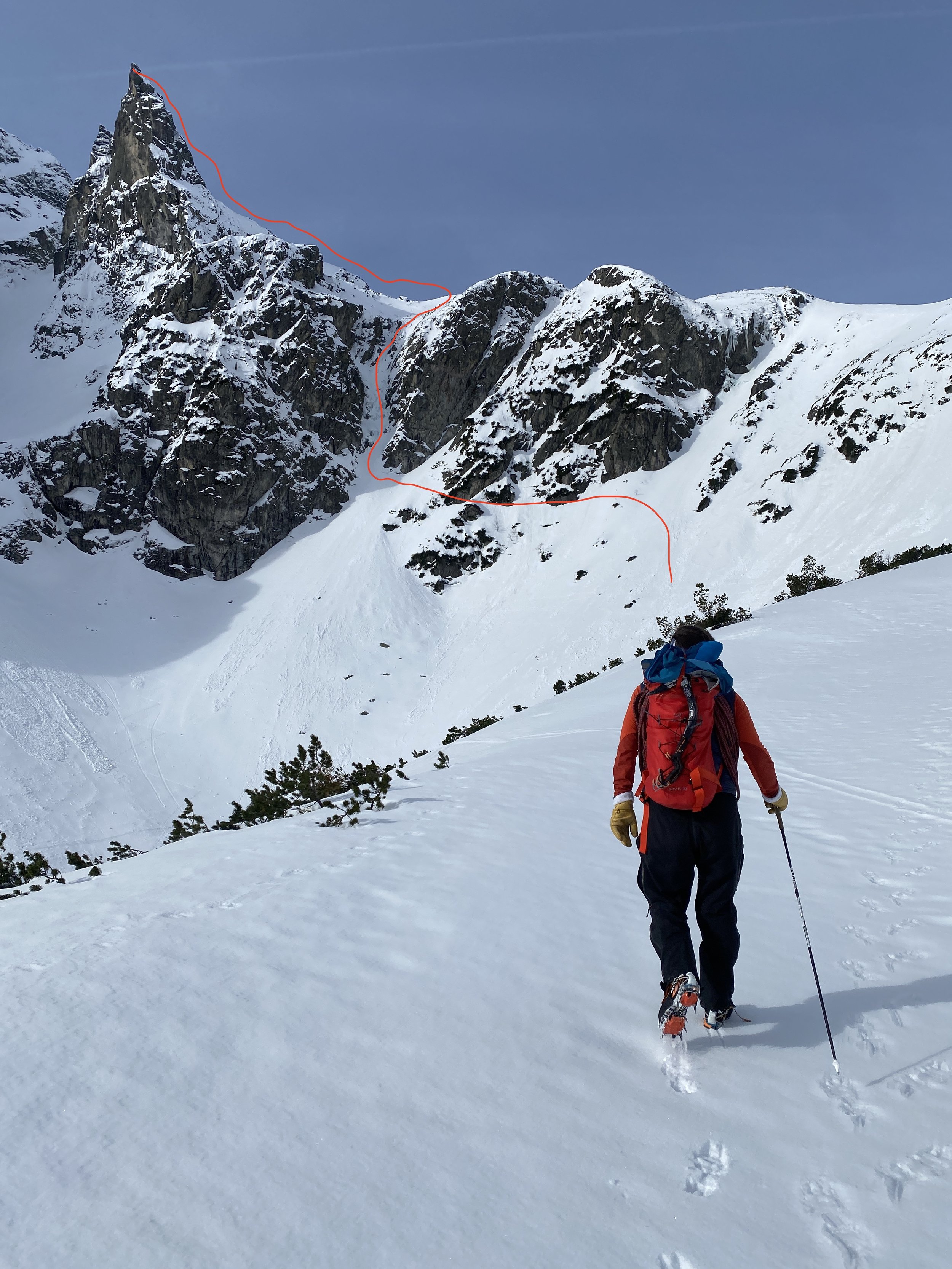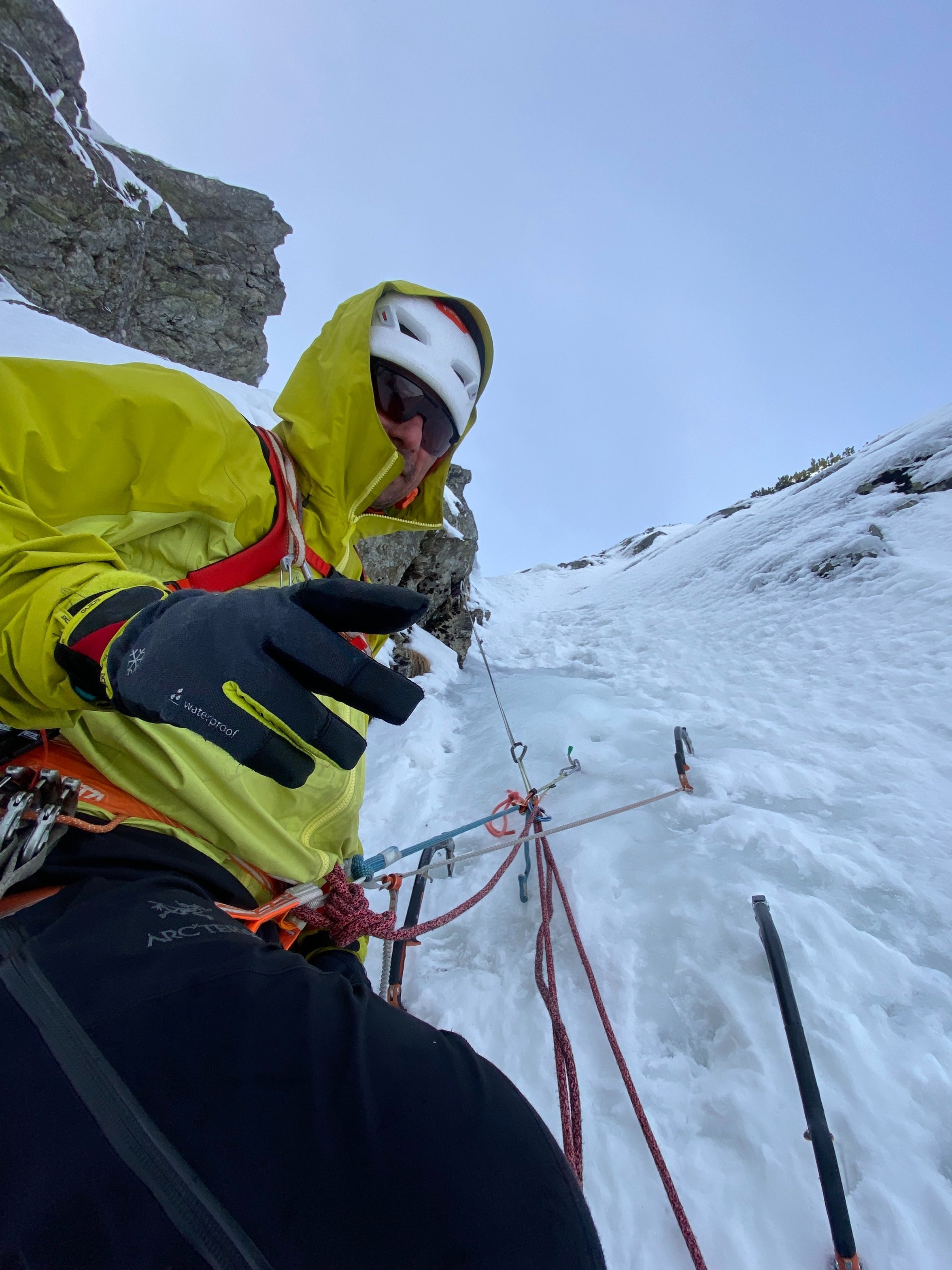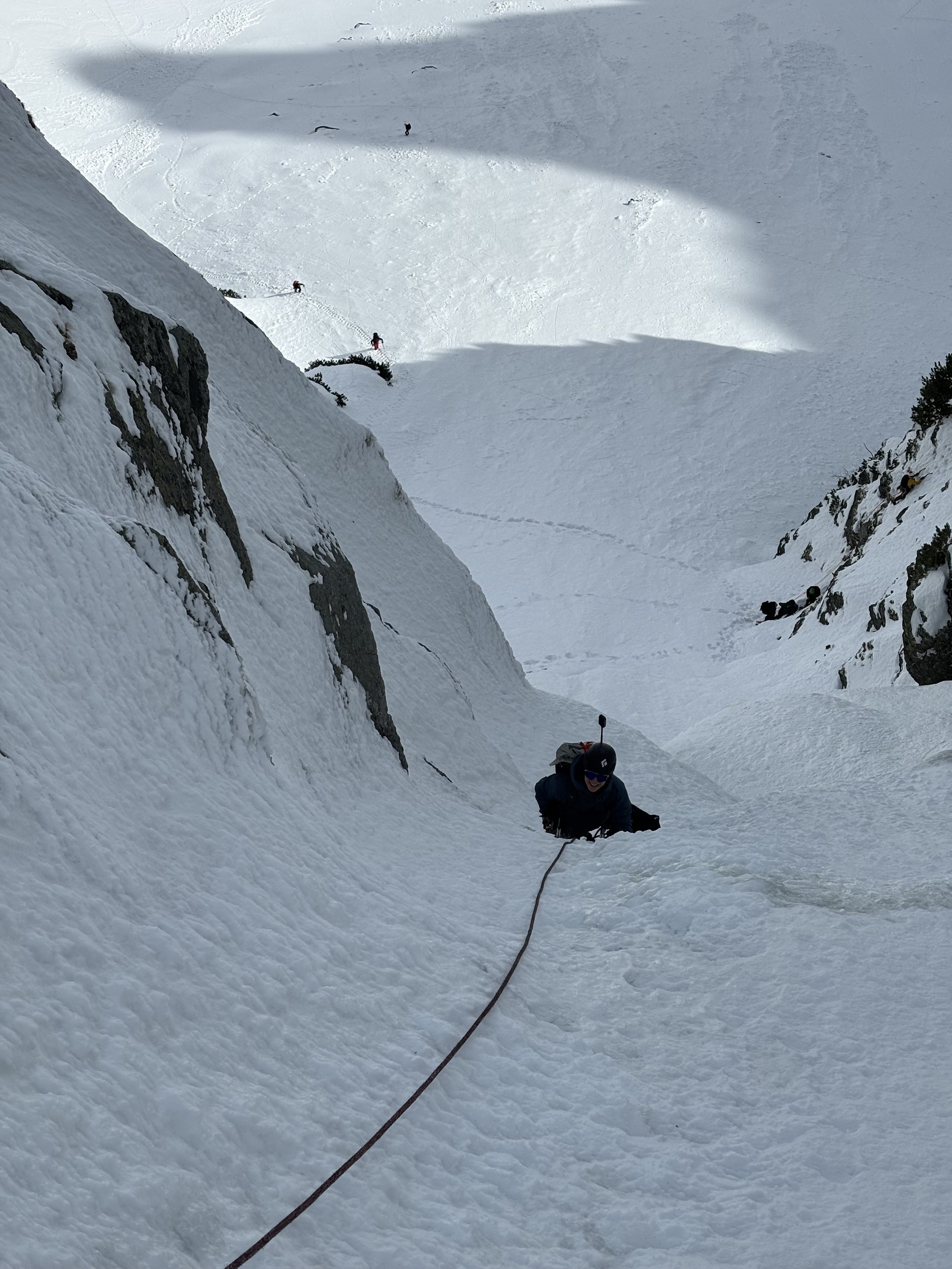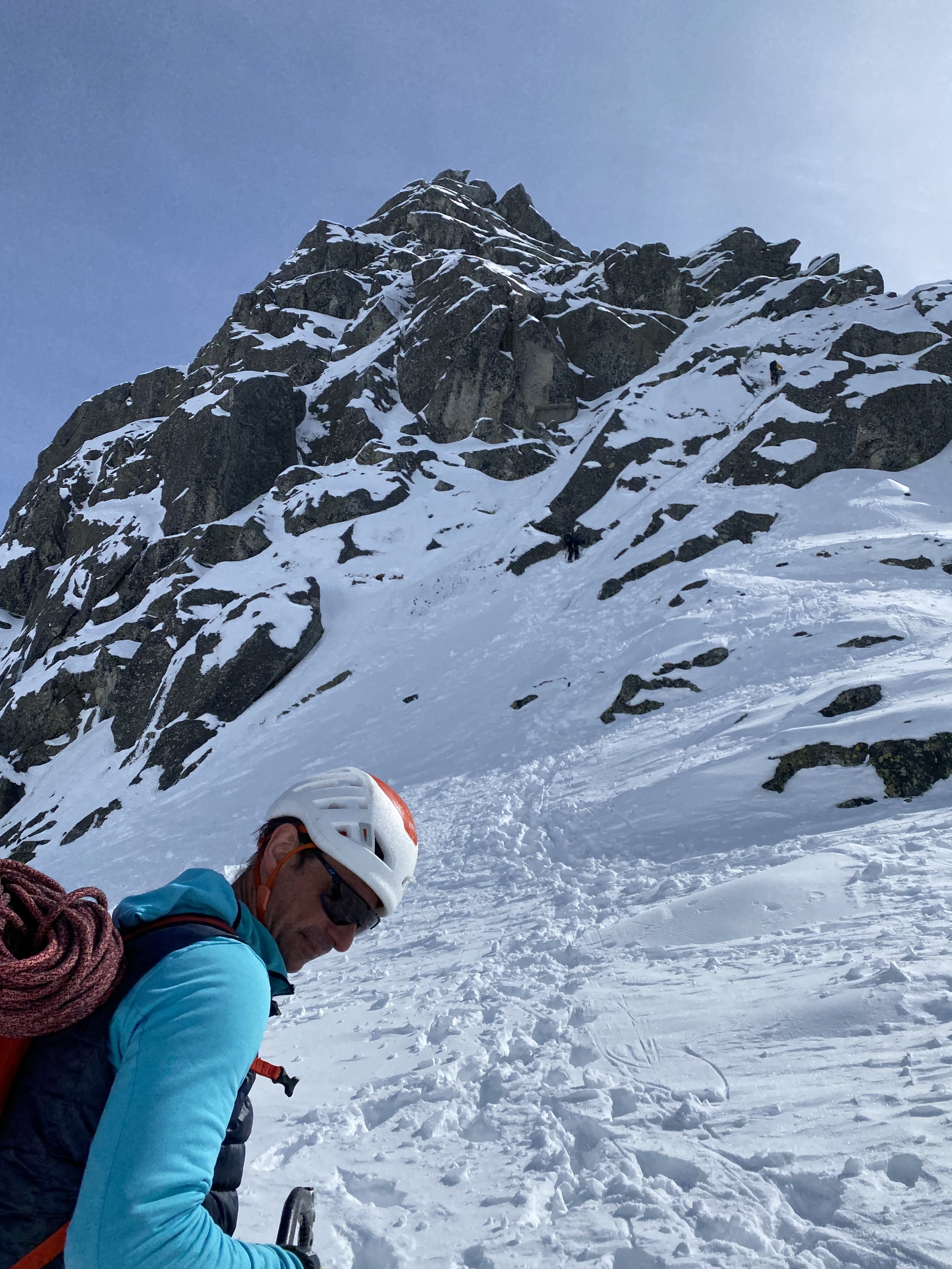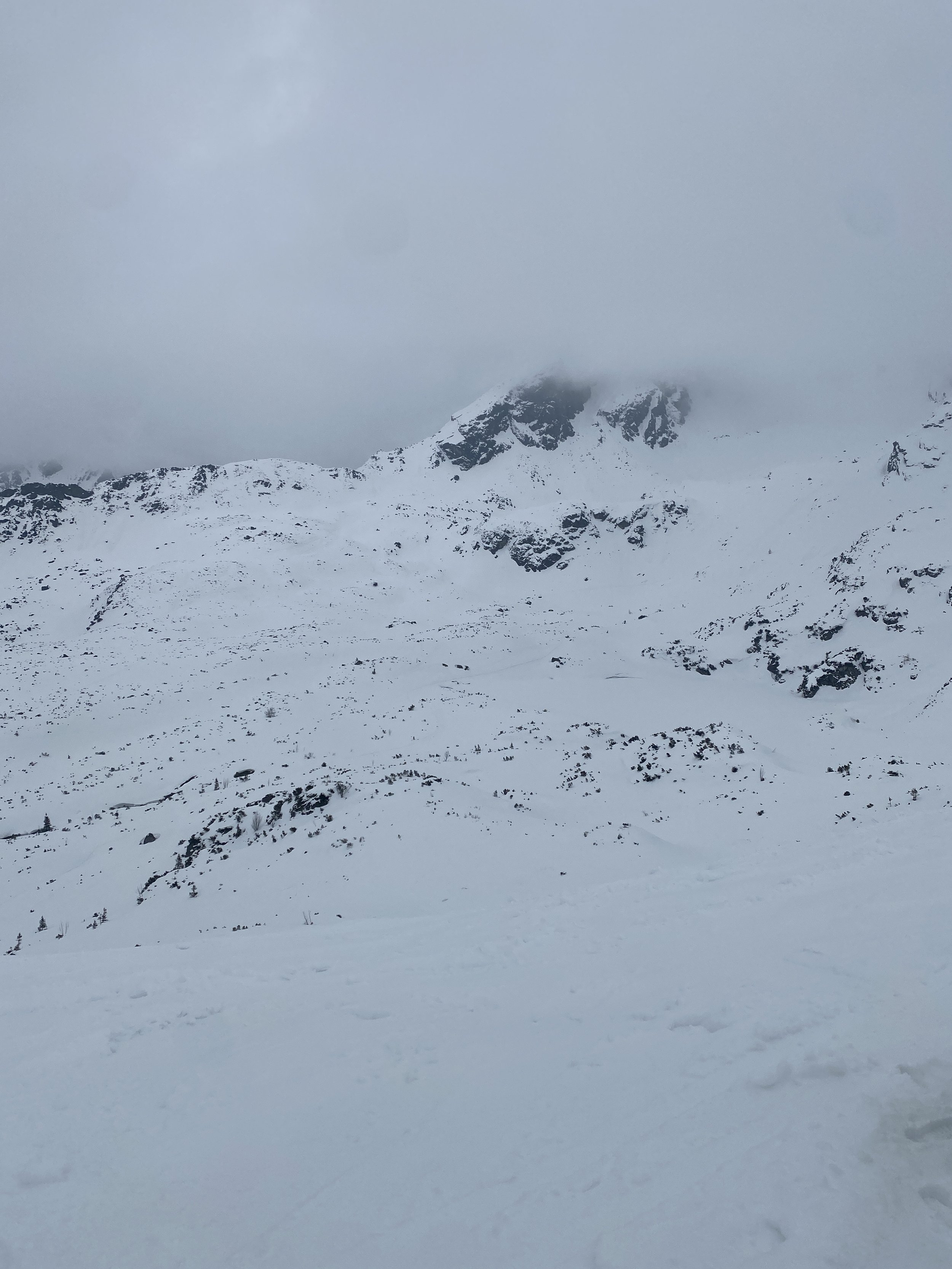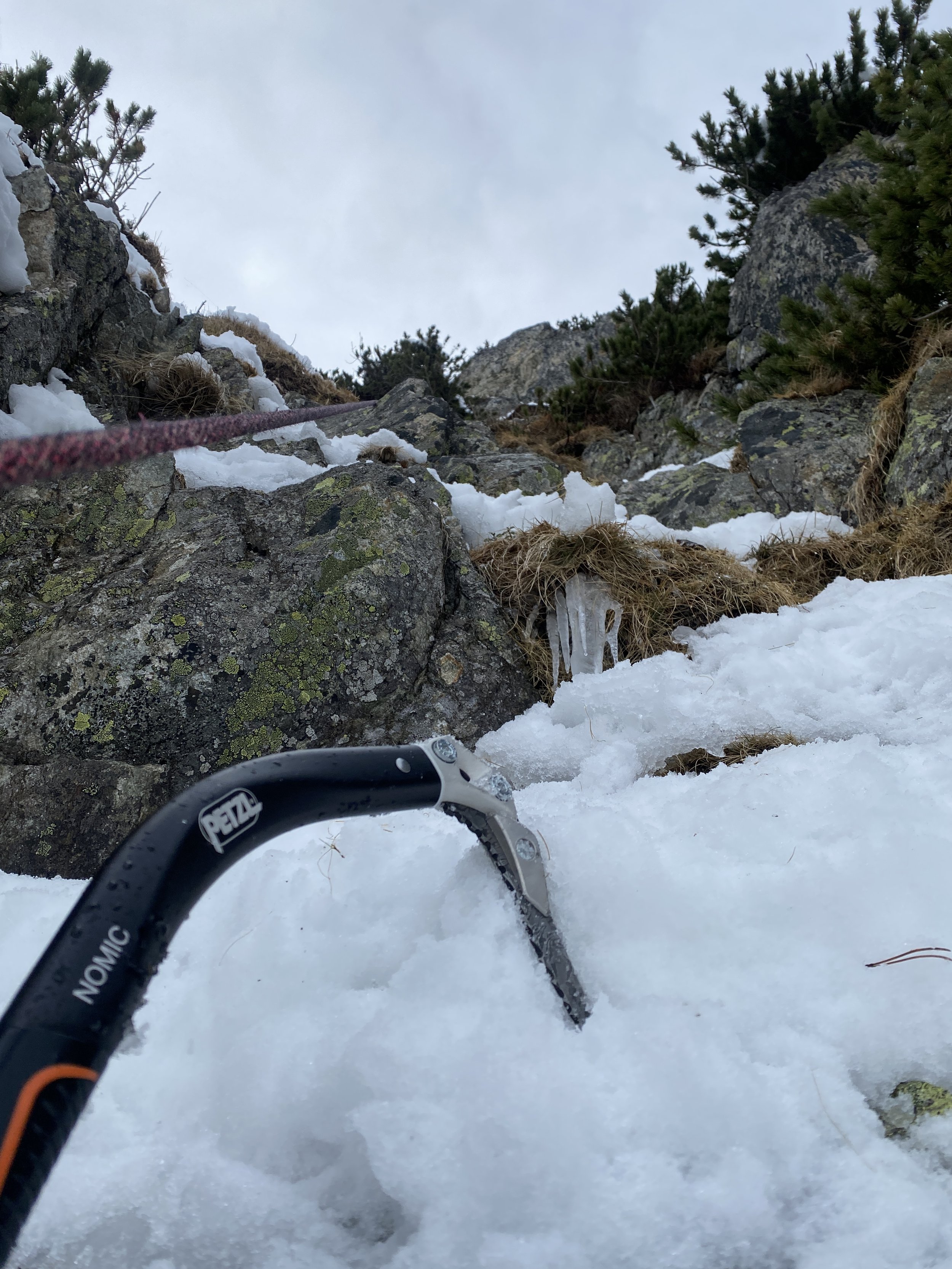Winter Climbing in the Polish Tatra Mountains
In March 2024, after making a pair of early 1900’s style hand forged crampons, I set off to go climb with them in the same place I first saw a historical example of an early crampon. Read our previous blog post for more context!
Crampons and climbing gear packed into my checked luggage, I took a budget flight from London Stansted airport to Krakow, Poland. I booked a cheap rental car from Kaizen Rentals, all went smoothly and 15 minutes after picking up my bag I was on the road headed south all the way down to the mountain town of Zakopane. After an hour and a half of easy driving I made it to the hotel to check in at 11pm.
I stayed at the modest but very acceptable “Willa Excelsior”, 50 quid total for two nights is hard to beat. It’s a good spot relative to the restaurants and shops in Zakopane too. I’d caution you from staying much further away than here from the central shopping area (see Centrum Miasta on the map) as the town is quite spread out, and, during peak season parking close to the center is a nightmare.
In the background is the mountain called “Giewont”, the Sleeping Knight, viewed from the center of Zakopane.
Onto the climbing!
As a relative beginner to climbing, there is no way I would be going up into the mountains alone and without a guide. That is where Maciej Ciesielski steps in. He has climbed incredible objectives all over the world and is an IFMGA mountain guide. My very first introduction to winter “mixed” and ice climbing was with him earlier this year and I can’t recommend him highly enough for anyone wanting to experience climbing in the Polish Tatras.
Kuluar Kurtyki, WI3 and Mnich
We met at 6:30 am to drive up to the road to Morskie Oko Lake. Once parked, we finished packing gear and set off towards the lake. Just before reaching the refuge, we cut off to the right onto a trial that began traversing the east facing slope of the valley before ascending higher towards the ice.
View from the refuge at Morskie Oko of Kuluar Kurtiki leading up to the right hand side of Mnich.
The 3 pitches were very enjoyable. The warm weather meant I was climbing in just a base layer and my shell jacket and almost every swing of the ice tool sent it deep into the mix of ice and frozen snow covering the pitch. I belayed Maciek as he lead the route. I am definitely getting more comfortable being at heights and the hanging belays are no longer causing me utter terror. The top of the route lead into a big snow field and a track of footsteps towards our next destination, Mnich, the Monk. We decided for safety we would make the day’s ascent in modern crampons before we switched to my hand made crampons for the descent where we would have less time-pressure and a less technical route. After scoffing some candy and having a quick drink, we were off.
The climbing from here up to the top of Mnich was quite simple, it only required a single ice axe and was mostly steep snow, with the occasional rock move. It is no surprise that the view from the top was incredible.
At the top, I switched into my hand forged crampons. Two abseils opened us onto the back of Mnich where we could walk off the rest of the way. My first impression of the crampons was they were phenomenal. They were firmly secured to my boots and felt like they were sticking in the snow like glue. I wondered briefly why on earth any modernising was required of these fine instruments. They were awesome!
However, after a minute more of descending the snow, I noticed the grip I had was deteriorating fast. Looking down I saw that the crampons were completely “balled” up with snow. Modern crampons have “anti-balling plates”. A rubber material that flexes as you step into the snow, breaking the snow and not allowing it to compress into a firm packed ball between your crampon spikes. Without these, my early-1900’s style crampons became very dangerous very quickly. The descent from here was several km of steep snow and so Maciek and I decided it was too dangerous to continue using the old crampons and so I switched back to the modern Pretzl Dart crampons.
Balled up snow compacted in between the crampon spikes, making them useless!
Descending the snow off the back of Mnich.
Combining Kuluar Kutiki and Mnich made for a great day of adventure. I finished it off with a giant plate of Potato Pancakes with Beef Stew. It’s my favourite Polish dish. Ask for “Placki Ziemniaczne” when you are in Poland and you won’t be dissapointed!
Day Two: Mixed Climbing “Czuba nad Karbem”
I’ve referred to it a few times…Perhaps it is time I should try to explain what “mixed climbing” is. It is winter climbing on terrain that may have a mixture of ice, snow, rock and frozen turf (which provides excellent ice tool and crampon placements!). Mixed terrain still uses crampons and ice tools, but sometimes you may still make a move with a hand-hold.
Our climb began with a short 10 minute taxi ride to the Kasprowy Wierch cable car at Kuznice. At the booth, I bought a lift ticket to go up and back down, about £50. The lift has a mid-station where you swap into a second cable car to get the whole way up to Kasprowy Wierch. This is also a popular ski area, one of the best in Poland as far as I understand and is the gateway to enormous amounts of off-piste skiing too.
We were not on skis however, so we hiked down and across one valley before ascending up to a saddle known as “Karb”. Again, the hike in proved very warm. I was down to just a baselayer to try to keep from drenching myself in sweat. Once we reached the saddle, we carefully descended the snow couloir before traversing the snow at the bottom of the face of Czuba nad Karbem to find our first pitch.
Pitch 1 was some easy low-angle M3 grade climbing but showed us quickly the conditions we should expect. The warm temperatures had thawed any possible ice that could have accumulated through the season’s melted and re-frozen snow. It had also thawed the turf, this means, of the four terrains of mixed climbing, we were down to two…rock and snow. Oh, and small trees!
As we arrived to the belay of pitch 2, I tried to see what on earth we were meant to be climbing next…
To me, pitch 2 looked like a completely featureless, blank, near vertical wall of granite that I would have no chance of even getting on, let alone be able to successfully climb…There’s bloody nothing there!!! And I’m in Crampons!!!???
Maciek carefully ascended the face, placing cams to protect himself where he could. As I belayed him I tried to memorise the moves he made, the cracks and protrusions he found for ice tools and crampons. He suggested this pitch was best climbed without gloves incase a hand-hold would be needed and for the best dexterity. After 20 meters, he disappeared into a chimney and around the corner and kept going until he found the next belay. I had been staring at the wall for the last 30 minutes by the time he had shouted down that he was ready for me to climb. I had hoped to have learned its secrets.
Despite my best efforts, I had learned nothing. It simply was brutal.
I climbed it without glamour or style. I climbed it inch by inch. Slowly scanning all the rock in reach with every move, feeling it with my picks and prying at cracks to find where I could pull, occasionally stowing an ice tool in a slot to grab the rock in my fingers…I scratched my way up the bloody thing. My first M6 pitch was done, and shockingly without a fall.
Taking a precariously poised breather at the beginning of the chimney. The “Czarny Staw Gasienicowy” Lake frozen and snow covered a few hundred meters below in the background.
The following pitches were less technically demanding but equally adventurous. On several occasions I had to haul myself through a row of snow compacted saplings. (It turns out there are 5 mixed climbing terrains…tree climbing too…who knew!)
This pitch began with a traverse and some interesting rock moves, before a dive through the saplings into a snow slope above.
The meandering climbing continued until eventually, we reached the top. My damascus steel ice tool pick proved to be a trusty companion through the route. A lot of faith was put in those forge-welds! It certainly got dull and badly scratched up, but it held up to the dry-tooling on rock even better than the Petzl pick on the other tool I used.
Thank you Maciek for the brilliant guiding on these great two days of adventure! I’ll be back to the Tatras soon!
Special shout out again to Rab for the great gear (see Chamonix Ice Climbing Blog Post).



